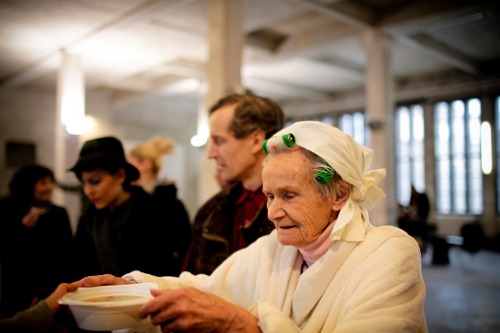Single person users now account for almost half of all users

Use of food banks in Canada has stabilized but a new report shows that single people – and especially seniors – are more likely to be using the facilities.
As more Canadians struggle with their finances, Food Banks Canada says that food bank use among single people has hit a record high with single person households accounting for 48% of users.
By analyzing data from 4,934 food banks across Canada, the organization has discovered that this percentage is up from 38% in 2010, while single parent usage has fallen in that time from 27.5% to 18%.
But although unemployment has also fallen, single person households are struggling due to housing costs; and seniors on pensions are finding it harder to make ends meet along with those receiving disability benefits.
"This is not the same face of hunger we've been seeing over the past decade. Single person households are the fastest growing groups of food bank users across Canada," explained Hatch. "Of prime concern is the need for a better income security system to reduce food insecurity among this group, who also experience high rates of poor mental health. We fear the resulting stress on incomes and health will only continue to add to growing levels of poverty and the need for food banks."
The report says that percentages of food bank clients who receive their main source of income from either provincial disability support (14.4% in 2010 vs. 17.3% in 2019) or pensions (6.6% in 2010 vs. 9.0% in 2019) have increased.
And provincial disability support and pension combined has increased from 21% of all food bank clients in 2010 to 26.3% in 2019.
Seniors use surges
Even as progress has been made to give more financial support for seniors, they remain more vulnerable to rising costs of rent and food due to being on fixed incomes and having greater health care needs.
The report reveals that Canadians over the age of 65 accessing food banks have increased by nearly 30% since 2016, while age groups under 30 have decreased or only minimally increased during the same time period.
Those Canadians who live in market rent housing have also become more prevalent users of food banks compared to those in social housing.

"Hunger is cruelly invisible and people who are hungry will rarely ask for help," said Sylvain Charlebois, Senior Director Agri-Food Analytics Lab and professor in Food Distribution and Policy at Dalhousie University. "The fact is they shouldn't have to make trade-offs between paying rent and eating nutritious food. We need reliable, effective social safety nets to help them. Food banks are at the forefront of understanding how to engage the human spirit, between those who need it and those who want to help."
It may be a neighbour, a friend, or even a member of your family. Children should never have to worry about being able to eat. You can help them find food solutions that go beyond immediate hunger. Visit #HungerCount2019 to learn more today: https://t.co/rvujpQJZCH pic.twitter.com/lv5DnaWFSn
— Food Banks Canada | Banques alimentaires Canada (@foodbankscanada) November 12, 2019



